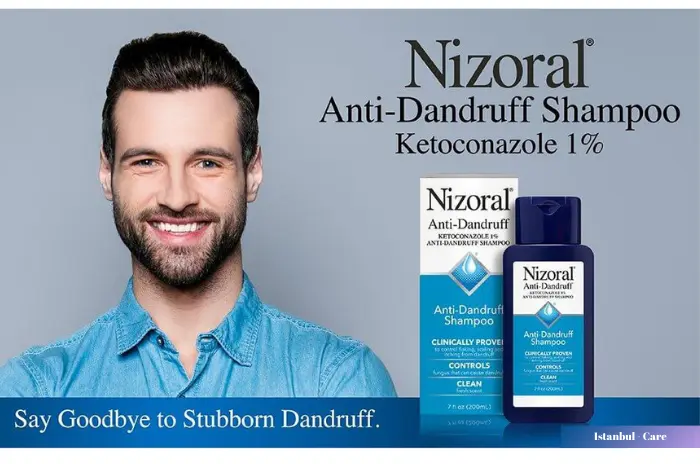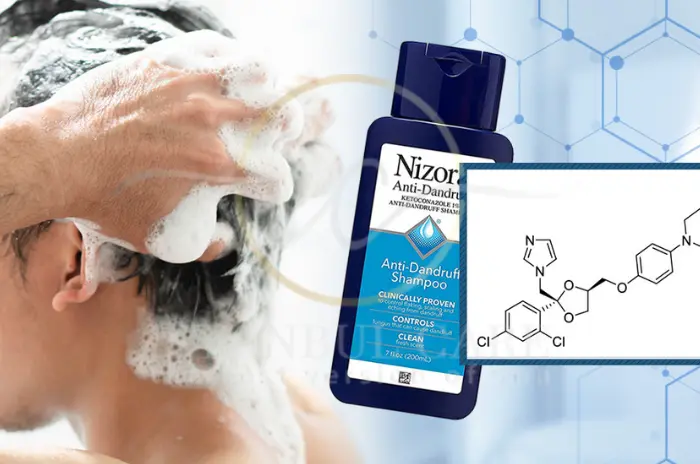
What Is Ketoconazole Shampoo Used For?
Ketoconazole is an antifungal shampoo that targets Malassezia yeast on the scalp—the key driver behind many cases of dandruff and seborrheic dermatitis. By lowering yeast counts and calming inflammation, it helps reduce flaking, redness, itching, and oiliness. It may also support a healthier environment for hair growth when inflammation is part of the problem.
Common uses:
Dandruff and seborrheic dermatitis of the scalp
Itchy, oily, or flaky scalp with redness
Maintenance after flare-ups to keep symptoms controlled
Notes:
Strengths: 1% (over-the-counter in many regions), 2% (often prescription)
- Body areas: Formulated for scalp; specialized instructions exist for skin conditions on face/chest—ask your provider
- Hair loss: Ketoconazole doesn’t “regrow” hair by itself, but by reducing inflammation and scaling, it can help keep follicles healthier and improve tolerance of other therapies
How to Use Ketoconazole Shampoo Safely
Use technique and frequency correctly to get results while minimizing dryness or irritation.
Step-by-step application:
Wet scalp thoroughly
- Apply a small amount (about a teaspoon for short hair; more for long/thick hair) to the scalp, not just the hair
- Massage gently into the scalp for even coverage
- Leave on 3–5 minutes (contact time matters)
- Rinse well. If hair lengths feel dry, apply conditioner only to mid-lengths and ends (keep off the scalp if seborrhea is active)
- Dry gently before applying leave-on treatments (like minoxidil)
Frequency guide (general):
Active dandruff/seborrhea: 2–3 times per week for 2–4 weeks
- Maintenance/prevention: 1 time per week or every other week once symptoms are controlled
Sensitive scalp: Start 1–2 times weekly and increase as tolerated
Practical tips:
- Alternate with a gentle daily shampoo on non-ketoconazole days
Avoid eyes and broken skin
- Colored or very dry hair: use a light conditioner on lengths after rinsing to prevent brittleness
- If you also use minoxidil, shampoo first; apply minoxidil to clean, dry scalp afterward
Ketoconazole Shampoo Benefits for Dandruff and Scalp Conditions
| Goal | What Ketoconazole Helps With | What You’ll Notice | Timeframe |
|---|---|---|---|
| Reduce yeast & flakes | Targets Malassezia overgrowth | Less visible flakes, fewer “snowy shoulders” | Often within 1–2 weeks |
| Calm inflammation | Decreases redness/itch, soothes scalp | Less itching, burning, and tenderness | Often within 1–3 uses |
| Control oiliness | Normalizes sebum microenvironment | Scalp feels less greasy; styles hold better | 1–2 weeks |
| Support hair-care routine | Improves tolerance of other actives | Fewer irritative flares when combining treatments | Ongoing with consistent use |
Expectations:
Flaking usually declines quickly; full control may take several weeks
Maintenance use helps prevent relapses, especially in colder months or high-stress periods

What to Know Before Using Ketoconazole
Before starting, check the following to avoid irritation or interactions.
Who should be cautious:
Very sensitive or eczematous scalp: start slowly, use shorter contact time, and moisturize lengths
Pregnancy or breastfeeding: topical absorption is low, but discuss with your provider first
Known allergy to ketoconazole or shampoo excipients (fragrance, dyes, preservatives)
Routine planning:
Pair with a gentle, fragrance-smart shampoo for off days
If using acids/retinoids on the scalp for other reasons, separate days to limit irritation
Microneedling or abrasive treatments: avoid ketoconazole on the same day
1% vs 2%:
1% suits most mild-to-moderate cases and maintenance
2% may be chosen for tougher, recurrent flares under clinician guidance
Possible Side Effects of Ketoconazole Shampoo
Most people tolerate ketoconazole well, but mild side effects can occur and are typically reversible.
| Side Effect | How Common | What It Feels Like | What to Do |
|---|---|---|---|
| Dryness or mild scalp irritation | Occasional | Tightness, slight burning, flake “lift-off” | Reduce frequency, shorten contact time, use gentle conditioner on lengths |
| Temporary hair texture changes | Occasional | Hair feels rougher/less silky | Use a light, scalp-safe conditioner on lengths; avoid heavy oils on scalp |
| Increased shedding (perceived) | Uncommon | More visible hairs during wash | Often due to scale removal revealing resting hairs; monitor 2–4 weeks |
| Discoloration of hair (rare) | Rare | Color shift on heavily processed or gray hair | Space out use; consult stylist/provider |
| Contact dermatitis | Rare | Itchy rash, redness beyond baseline | Stop and seek medical advice |
Stop use and get medical help if you notice severe burning, widespread rash, swelling, or eye exposure.
Comparing Nizoral with Other Hair Loss Treatments
Ketoconazole is primarily an antifungal/anti-inflammatory scalp therapy. It can complement, but not replace, hair-loss-specific treatments.
| Therapy | Primary Role | Evidence Focus | Typical Use | Works Well With |
|---|---|---|---|---|
| Ketoconazole shampoo | Dandruff/seb derm control; calmer scalp | Reduces flakes/itch; supports scalp environment | 2–3x/week active, then weekly maintenance | Minoxidil, LLLT, PRP, gentle routines |
| Minoxidil (topical/oral low-dose) | Follicle stimulation (anagen support) | Density/miniaturization | Daily (topical) or as prescribed | Ketoconazole (use shampoo first, apply minoxidil to dry scalp) |
| Finasteride/Dutasteride (men; selected women under care) | DHT reduction (pattern hair loss) | Slows/partly reverses AGA | Oral, per prescription | Ketoconazole, minoxidil |
| LLLT devices | Adjunct stimulation | Hair thickness/quality | 3–4x/week | All above |
| PRP | Growth factor delivery | Density/quality (series) | In-office sessions | Ketoconazole maintenance between sessions |
| Gentle basic shampoo | Barrier support | Comfort/tolerance | On non-ketoconazole days | All regimens |
Key point: Ketoconazole manages the scalp; combine with growth-directed therapies if androgenetic alopecia is present.
Speak with our expert Hair Transplantation specialists

Speak with our expert Hair Transplantation specialists
We’re ready to answer your questions
Frequently Asked Questions
For active dandruff/seborrhea, use 2–3 times per week for 2–4 weeks, leaving it on 3–5 minutes each time. For maintenance, reduce to once weekly or every other week. Sensitive scalps can start lower and increase as tolerated.
True shedding from the shampoo itself is uncommon. Early on, lifting scale can make resting hairs more noticeable in the drain. As inflammation settles, many people see less shedding from seborrhea-related irritation. If shedding persists beyond 3–4 weeks, review your routine with a professional.
The most common are dryness, mild irritation, and temporary texture changes. These usually improve by shortening contact time, spacing out washes, and conditioning mid-lengths/ends. Stop and seek care for significant rash or burning.
Yes. Shampoo first, rinse and dry the scalp, then apply minoxidil. Keep minoxidil on the scalp for the recommended contact time before styling or sleeping. On non-ketoconazole days, use a gentle shampoo to maintain comfort.

